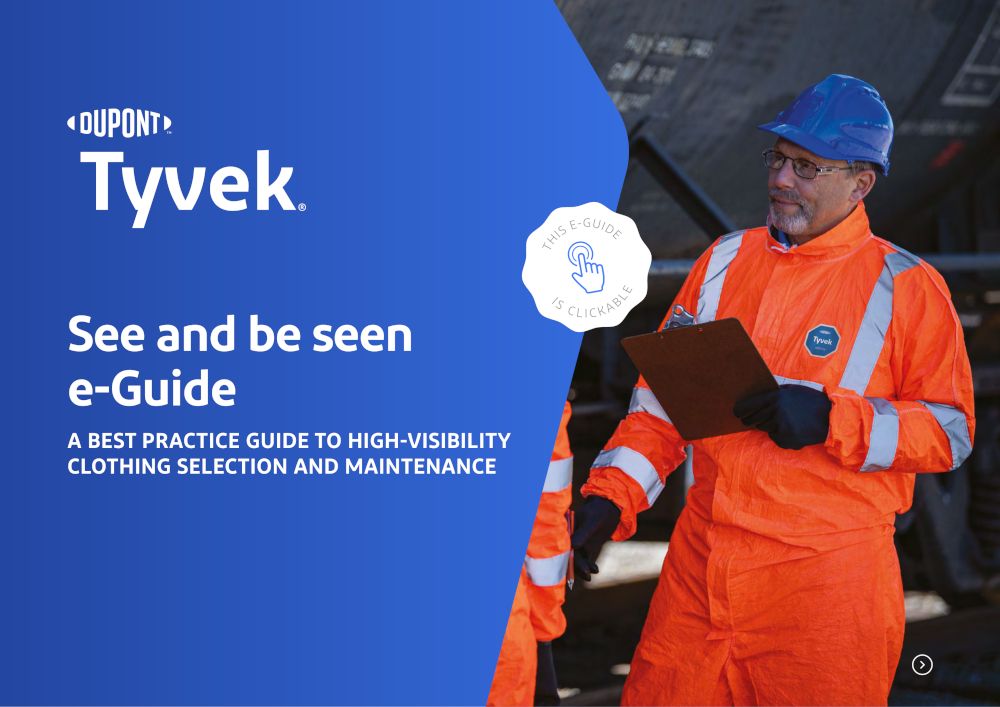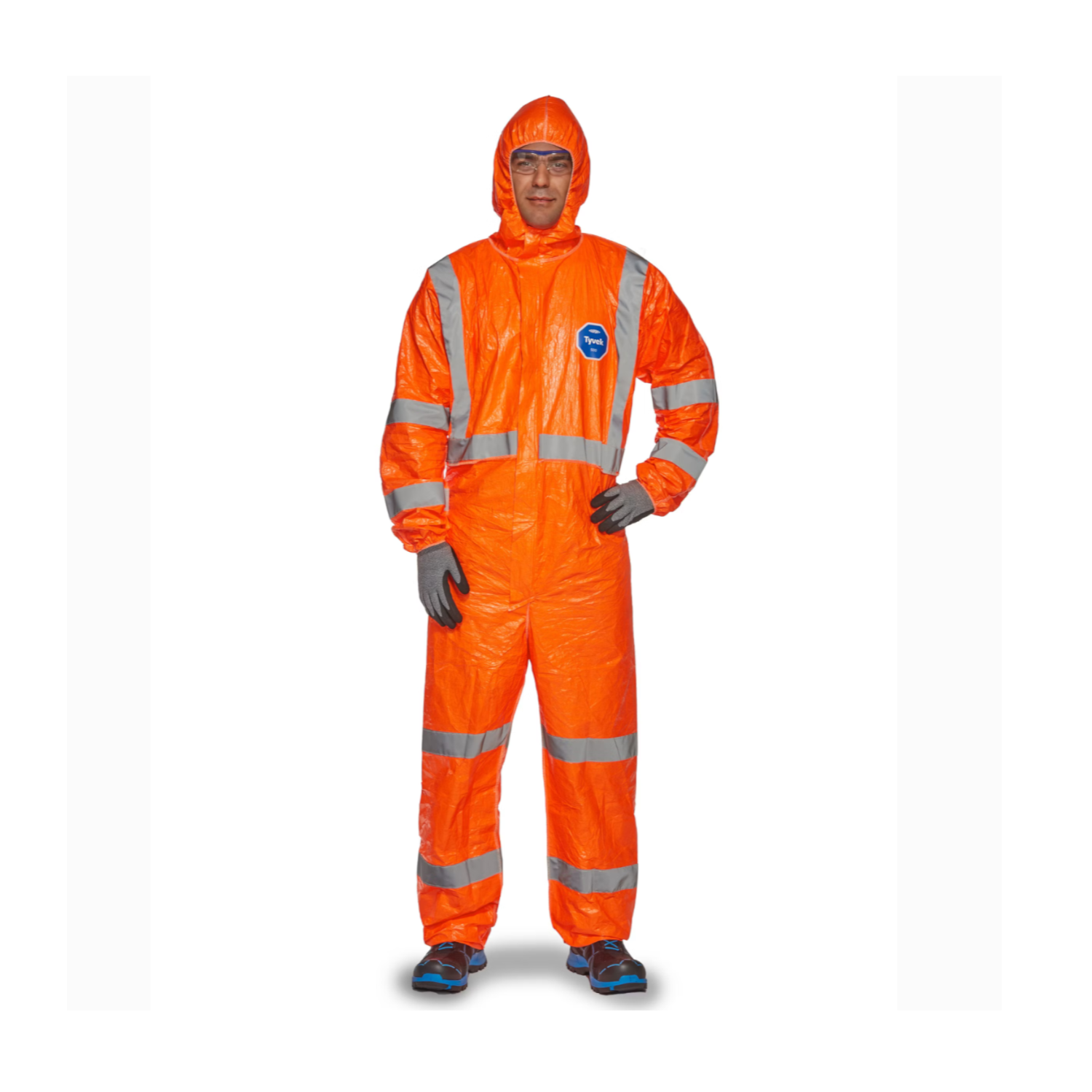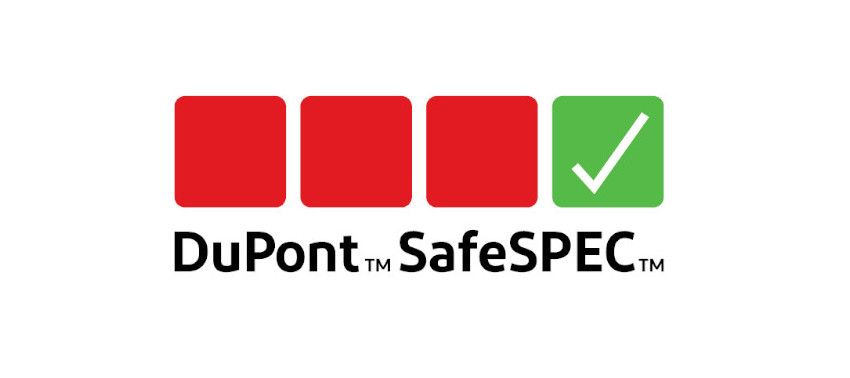-
See and be Seen: Download the e-Guide
-
What is High-Visibility Clothing?
-
Product Solution
-
Case Study
High-visibility (high-vis) protective clothing is an essential component of workplace safety. It relies on a combination of bright colors and retroreflective bands to make the wearer easily seen in various lighting conditions and work environments, such as night working in construction and railway maintenance.
However, selecting and managing high-vis clothing can be complex and expensive, particularly when multiple hazards are encountered. Worker safety can also be compromised if these protective garments are not properly stored, checked, and cleaned.
See and be seen e-Guide
Essential insights for selecting and maintaining high-visibility clothing
This e-guide provides practical guidance on choosing and caring for high-visibility garments. Learn the key selection criteria, understand important standards, and compare the benefits of reusable versus disposable clothing.
It also covers garment selection for scenarios involving chemical and biological hazards. This guide aims to equip health and safety managers with a solid understanding of high-vis clothing and the latest material advancements.
Download now to improve workplace safety!

What is high-visibility (high-vis) clothing?
High-vis clothing is designed to make the wearer stand out, enhancing visibility from all angles to prevent injuries in hazardous environments. It’s essential for workplaces with moving vehicles, poor weather, or low light.
Equipping employees with the right high-vis gear not only enhances safety but also boosts morale and strengthens your brand's reputation. Compliance with safety standards brings peace of mind to health and safety managers.
High-vis garments feature bright fluorescent fabrics and retroreflective bands to outline the user's shape. Options range from simple vests to full-body coveralls, and they can be reusable or disposable. Choosing the right type is crucial for optimal safety.
For more information on choosing and maintaining high-vis clothing, be sure to read the e-guide!
See and Be Seen: Is Your High Visibility Coverall Compliant and Efficient?
Wearing a high-visibility vest over a chemical coverall isn’t always enough. Improper layering, fabric wear, or frequent laundering can lead to non-compliance with EN ISO 20471.
In this webinar, our expert Steve Marnach introduces a more reliable, single-garment solution: Tyvek® 500 HV 127 coverall—designed to reduce complexity while improving protection.
Occupations where high-vis garments may be required
Rail and Road maintenance and cleaning
Construction and demolition
Mining and quarrying
Engineering and utilities
Emergency services
Waste management
Security and crowd control
Explore our high-visibility product solutions for enhanced safety
Discover how advanced fabric technology is revolutionizing high-visibility clothing and can now offer all-in-one performance.
Take the DuPont™ Tyvek® 500 HV as an example. This single-use coverall delivers exceptional visibility while ensuring protection against chemical, biological, and static hazards. Meeting ISO 20471 Class 3 criteria, it was designed with the needs of a major railway workforce in mind and has proven effective across various industrial applications. It is available in 2 designs, providing complete body coverage for multi-hazard environments.
Explore our product portfolio to find the right solution for your safety needs!

Tyvek® 500 HV - TY0125SHV00
High-visibility (to the highest class), chemical, biological and antistatic protections in one coverall.
Ideal for use in dangerous environments involving exposure to water-based liquids and aerosols, as well as fine particles and fibers.
Collared coverall available in fluorescent orange with silver grey reflective bands for day and night visibility

Tyvek® 500 HV - TY127S XG
High-visibility (to the highest class), chemical, biological and antistatic protections in one coverall.
Ideal for use in dangerous environments involving exposure to water-based liquids and aerosols, as well as fine particles and fibers.
Hooded coverall available in fluorescent orange with silver grey reflective bands for day and night visibility
Featured Case Study
ETİ Bakır A.Ş. chooses DuPont™ Tyvek® to ensure workers’ safety
To ensure occupational and workers’ safety, a priority for the Company, Eti Bakır A.Ş. opted for DuPont™ Tyvek® brand in the Küre Plant, their mechanized underground metal mining operation. Kazım Küçükateş, Design and Underground Mine Manager, Eti Bakır A.Ş. said that the Company always put health and safety first and emphasized that they followed all of the latest solutions in health, safety and comfort.


